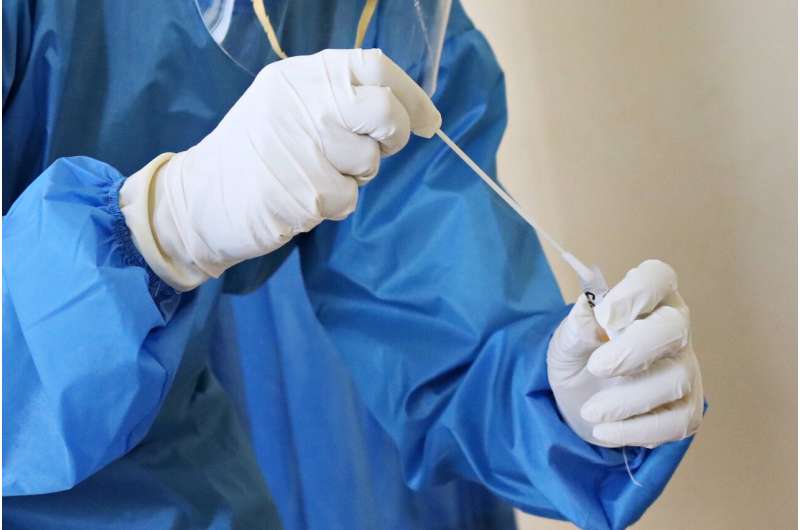
Testing pooled saliva samples twice weekly for SARS-CoV-2 on a residential college campus yielded a greater than 95% agreement with the gold standard for accuracy—nasopharyngeal diagnostic samples tested singly. At an average of 665 tests per week, the cost, just $0.43 per sample, likely remains the least expensive method to date. The research is published this week in Microbiology Spectrum, a journal of the American Society for Microbiology.
“Our study demonstrates a significant step forward for achieving rapid test results on a large scale, while preserving supplies and reducing costs,” said study author Daniel R. Sharda, Ph.D.
Using pools of ten samples, the test provides results in less than 8 hours, and is among the most sensitive available, detecting virus at very low viral load, according to the report. This approach enabled successful screening of 43,884 samples, detecting 83% of the semester’s COVID-19 cases.
“Future pandemics should use pooled strategies from the very beginning, when tests are otherwise limited,” said Dr. Sharda, who is associate professor and chair in the Department of Biological Sciences, Olivet Nazarene University, Bourbonnais, IL.
In the study, students submitted saliva samples once or twice weekly during spring semester, 2021. Saliva samples were collected every weekday before 9 am and delivered to the testing lab. “We first combined saliva in pools of 5 and 10 samples on the first RT-qPCR [reverse transcription quantitative PCR] run and then tested positive pools at the individual level in a second RT-qPCR run,” said Dr. Sharda.
“Positive individuals were notified to begin isolation immediately after being flagged as positive, and close contacts were told to quarantine shortly thereafter,” said Dr. Sharda.
The investigators noted that saliva sampling is non-invasive, does not require a transport medium, and is stable at room temperature for at least 24 hours. Self-collection by students was handled via the honor system, and fewer than 1% of samples were invalid, with 92% submitted on the assigned date.
In the study, 36.2% of those tested were asymptomatic, and 48.3 % of participants reported experiencing “very mild” symptoms at the time of testing. This suggests that without the mandatory testing, 84.5% of students might not have gotten tested on their own at the time of screening, according to the report. Furthermore, only 56% developed flu-like or severe symptoms during their illness. These results raise the possibility that COVID-19 contagion would have swept the college without the testing program.
The motivation for this research was “a very difficult and unpredictable fall semester in 2020, when we relied solely on testing self-reporting symptomatic individuals,” said Dr. Sharda. The large caseloads “were challenging to manage, and the college experience was very restrictive. None of us wanted to live through that again.”
Source: Read Full Article